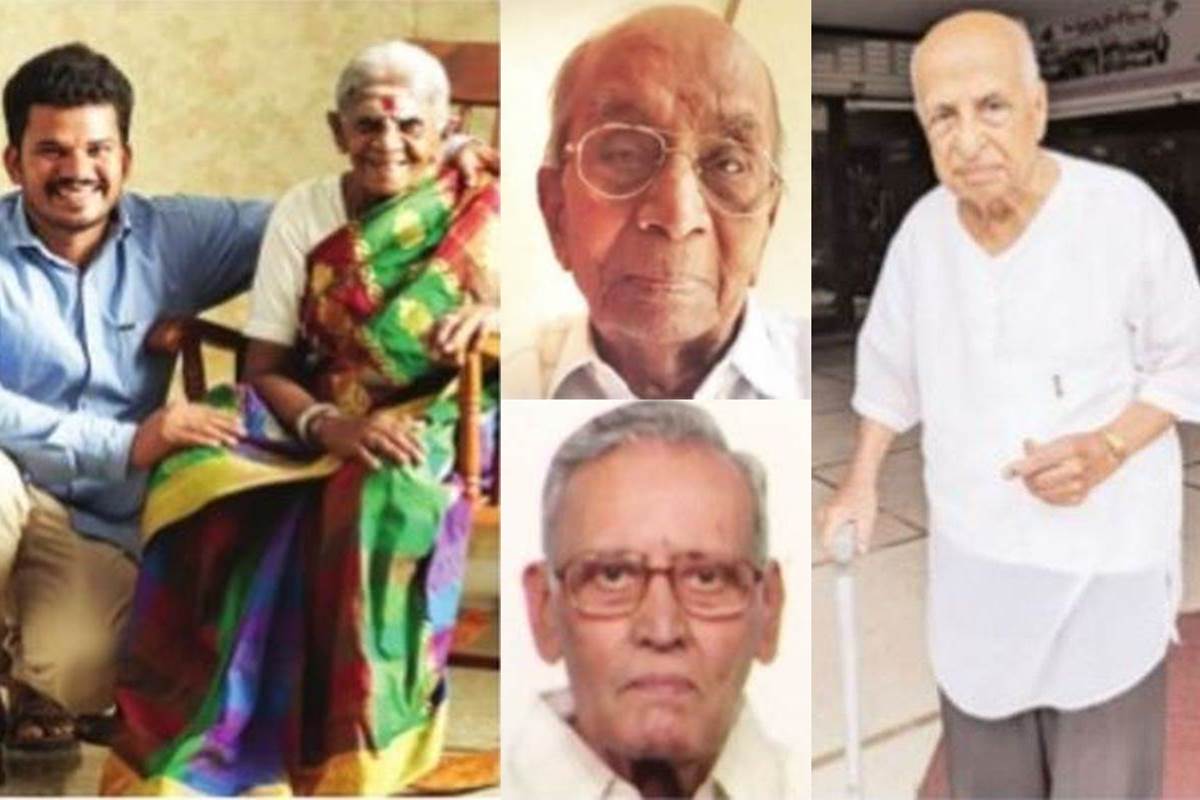On April 17, Professor G Venkatasubbiah was eagerly waiting for the voting day in the IT capital. Like him, Mrs Saalumarada Thimakka from Bengaluru Rural too was anxious to cast her vote . They are among the 5,579-odd centenarian voters in Karnataka (aged 100 years and above), out of a total electorate of 5.1 crore.
While Thimakka is set to touch 107 this year, Professor Venkatasubbiah is 106. Apart from their eagerness to vote, what distinguishes them from younger voters is that they have not missed a single Parliamentary, Assembly, gram panchayat or, for that matter, city corporation polls, to date. In fact, the Professor, who was 38 when he cast his maiden vote, remains proud of the fact that he has always been the first to reach the polling booth to exercise his franchise, something he has been doing since the first elections were held in 1951-52 in independent India.
Thimakka, on her part, is equally proud of the fact that she has not missed a single election. In fact, her son Uday told The Statesman that she was away at a place, which was 200 km from the ballot booth in her constituency, in the 2018 Assembly elections but she forced him to somehow help her reach the booth in time to cast her vote. Even today, the two centenarians, in their own persuasive way, do not miss an opportunity to urge other voters, young and old alike, to exercise their franchise.
READ | Lok Sabha elections 2019 Phase 2 LIVE UPDATES
Significantly, both the centenarians have been awarded the Padma Vibhushan by the Central government. While Professor Venkatasubbiah, a well known Kannada writer, grammarian and a lexicographer, is also famous for bringing out an over 1000 -page Kannada-English dictionary, Thimakka, is acknowledged across the world as an environmentalist, having planted over 8000 trees besides tending to them for several years.
When asked about the changes that they notice in the way voting and canvassing is done today, compared to the mid – fifties, even sixties and seventies, the unanimity of views is not difficult to understand.
While Professor Venkatasubbiah says that in those days, the number of parties and candidates seeking votes were but a handful, Thimakka adds that most of them were either personally known to the voters or spent hours visiting, wooing them at their doorsteps.
Importantly, the Professor recalls that during the early days, canvassing, even campaigning was done on cycles or horse driven carts. There was not much shouting ; even the loudspeakers did not blare much. It is in sharp contrast to the noise pollution that one has to bear with these days, he adds. Thimakka points out that earlier it was rare for people to splurge money to buy votes. The voters were too keen to exercise their franchise and depended on newspapers and the radio to form opinions about the candidates.
READ | Lok Sabha elections 2019 second phase | Key constituencies, candidates in 95 seats of 12 states and UTs
Professor Venkatasubbiah highlights another feature ,so common during the elections of the 50s even seventies. According to him, those days, most public rallies were conducted from a common platform. “As the candidates and parties were comparatively limited, most would use the same platform –either a school playground or the terrace of a prominent building. The minute one candidate finished addressing , the opponent would take his place. There were no fights or slogan shouting or name calling. They had a perfect understanding.”
Thimakka, who only remembers Indira Gandhi as the prominent personality of the seventies, is quick to point out that during those days there was little of caste politics or the “no holds barred” campaigning that is witnessed today. What is more, there was virtually no mud slinging or character assassination.
In the list of 5. 1 crore voters, AS Radhakrishnan Settty, from Hasan, also finds a pride of place as at 94 he is among the 1.4 lakh voters in the state who are between 90 and 99 years old. Though he is a bit annoyed this time as he does not find his name in the voter list, he remembers the earlier days in Mysuru when voting was extremely exciting with but a few candidates. According to him, none of them made tall promises and were invariably well known to the communities concerned.
Asked about the major change that he finds in today’s voting ,especially the use of EVMs, he is quick to respond “the electronic voting machines are a boon.”
Mr P Kannan, 86, has seen campaigning for over 60 years. Having lived in Pondicherry, now called Puducherry, Chennai and Bengaluru, he has had the privilege of voting in the three places. About his days in Chennai, he seeks to remove the cobwebs clouding his memory to say that those were the days of Periyar, Rajaji and Nehru. In some of the elections, only two parties would contest, the Congress and the Communists. He too is quick to add that compared to the ballot papers of yore, the EVMs are a major change and are quite helpful in speedy voting and counting. Like others, he was waiting for Thursday to cast his vote even though old age does trouble him a lot now.











